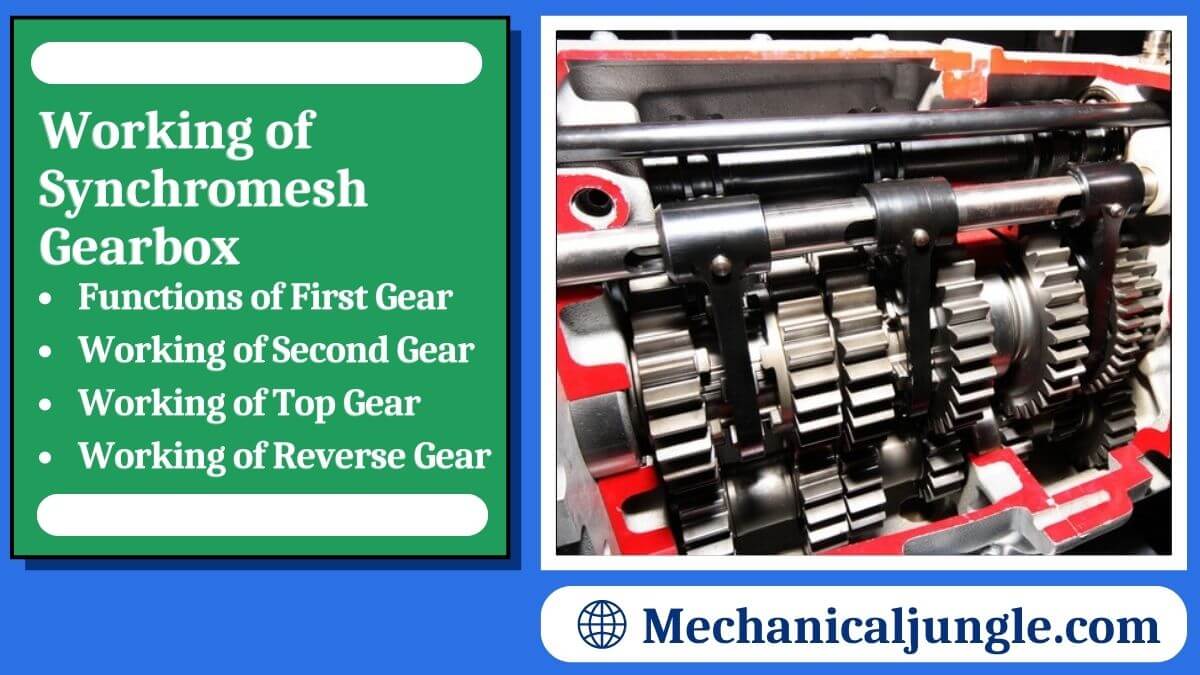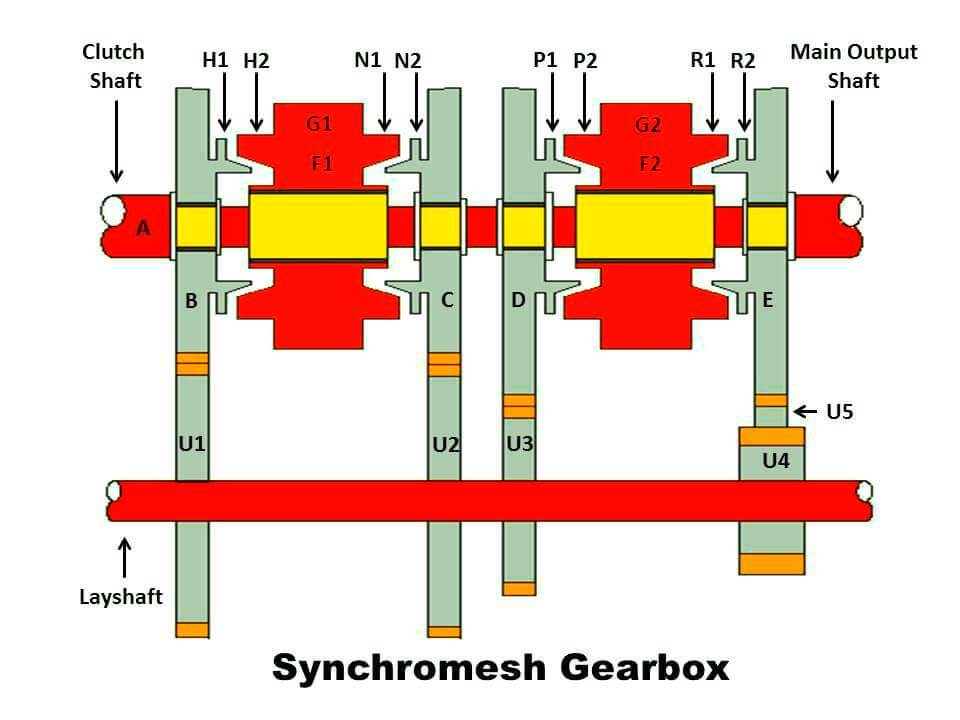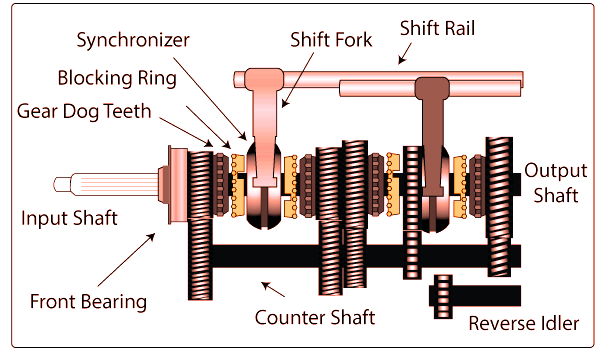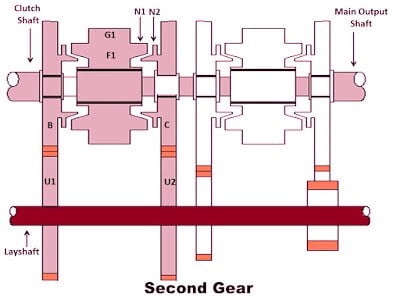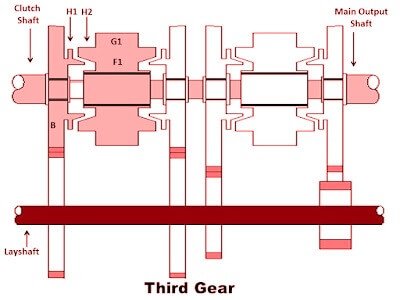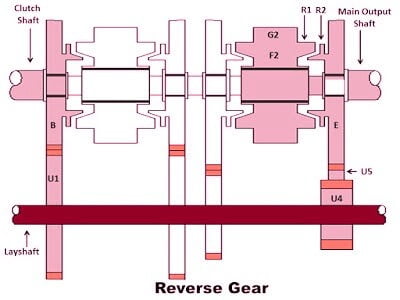Important Point
What is a synchromesh gearbox?
The Latest Version of the Constants Mesh Model Is the Synchromesh Gearbox. It Is a Manually Operated Transmission in Which Transmission Changes Occur Between Rotating Gears at the Same Speed. the Gears Can Roll Freely, or They Can Be Locked on the Layout Shaft in Such a Gearbox.
Synchromesh Is an Upgrade on the Dog’s Hug, Actually. the Synchronizer Is the Main Component of This Speed That Stabilizes the Transmission. a Synchronizer Is a Clutch That Allows Components to Rotate at Different Speeds. the Cones Are Used to Synchronize Friction Motions.
It Consists of Two Parts, the Centro Cone and the Bolt Ring, Which Are Synchronous. the Cone Is an Array Part, and the Synchronizer Part Is the Ring Part. Once They Spin at the Correct Speed, the Bag Ring Stops the Engaged Gear. as the Ring Enters the Circle, Friction Slows Down or Speeds the Gear Wheel.
Finally, the Synchronizer and Gear Speeds Will Be Balanced and Rotated at the Same Speed. the Shaft Gears Are Attached to Them, While the Gears of the Shaft Are Free to Rotate.
Construction of Synchromesh Gearbox
The synchronizer is placed between the two gears. So we can use one unit for two gears. G1 and G2 are ring-shaped members with inner teeth that fit over the outer teeth. F1 and F2 are the slidings members of the main shaft. H1, H2, N1, N2, P1, P2, R1, R2 are friction surfaces.
Step – 1. Main shaft gear
- A diaphragms shaft is used to connect the sinking devices and gears to the output shaft.
- According to fig., B, C, D, E are gears that can rotate freely on the main shaft in the mesh with the appropriate gears in the appropriate shaft.
- Where shaft A rotates continuously, all changes occur in the main shaft and the left shaft.
Step – 2. Layout gear:
- It is the middle shaft on which the rotational motion from the collision shaft to the final output shaft is mounted on the appropriately sized gear.
- The fixed gears on the countershaft (Lashel) are U1, U2, U3, U4, according to fig.
Step – 3. Clutch Shaft:
- It is a shaft used as a shaft inserted in the transmission box when the output of the engine is brought into the transmission box.
Step – 4. Cone Synchromesh
- There are two buttons on the side of the device used.
- The first is a hollow cone, and the second is a ring of a dog’s teeth.
- The gear comes in contact with the conch and teeth.
Step – 5. Synchronizer:
- These synchromesh boxes have special shifting devices with conical grooves on the surface that provide frictional contact with the equipment to be forged so that the main shaft, shaft, and clasp shaft are equal in speed, which, in effect, is a Shifting of gears ensures smooth.
Step – 6. Gear lever:
- It is a shifting lever operated by the driver and is used to select the appropriate gears, i.e., 1, 2, 3, 4, 5, or reverse gear.
Also, Read: Difference Between Orthogonal and Oblique Cutting | Orthogonal Machining
Principle of Synchromesh Gearbox
- There is always an issue in the gearbox when the stationary gear is moved with the gear at a higher speed.
- The principle states that “the gears are abrased with each other before the gear is engaged and engaged after the speed is equalized.”
Working of Synchromesh Gearbox
In synchromesh, the lashft is directly connected with the piston, but when the clutch is decommissioned, it rotates freely. Synchro is the proper speed by which your teeth are sharpened so that the required speed of the output shaft is achieved because the gears have always been accelerated.
Step – 1. Functions of First Gear:
- For the first gearing, the ring shaft part and the sliding part, e.g., G2 and F2, P1 and P2, go left until cone rub.
- The friction is then proportional to its velocity. Once the G2 is equal to its rpm, it is shifted forward to the left and joins with the L2 tooth.
- The clutch gear B is moved at speed from Lesheft gear U1. Later, the movement is transferred to Layshaft U3 and main shaft gear D.
- From there; the motion is given a final push on the F2, lever, and main shaft.
Step – 2. Working of Second Gear:
- The ring shaft for two gears and sliding elements, i.e., G1 and F1, shifts to the right before cones N1 and N2. The frictions are then equal to its size.
- The G1 was moved further to the right and meshed with machinery.
- The movement from bucket gear B to the loading gear U1 has been shifted.
- The proposal will be passed from U1 to U2. The main shaft gear C is shifted from U2. The motion is then passed to the slider F1. Instead, she left for the final journey to the main shaft.
Step – 3. Working of Top Gear:
- This speed is driven from cluster gear B to top gear or sliding component F1 for direct gear. Then key shaft from F1. You move G1 and F1 to the left. It happens.
Step – 4. Working of Reverse Gear:
- For the reverse gear, the switch is transferred from clutch gear A to shaft gear U1. The U4 lace wheel tool is moved from there, and the U5 intermediate tool is moved again.
- Main shaft E, sliding member F2, and finally, the shaft going from second to second.
- This is accomplished by switching the G2 to the right.
- The intermediate gear leads to the reverse gear.
Advantages of Synchromesh Gearbox
Here, the different advantages of the synchromesh gearbox are as follows.
- Smooth and noise-free gear shifting that is best suited for cars—no loss of torque transmission from engine to driving wheels during a gear shift.
- Double clutching is not required. Low vibration.
- Quick shifting of gears without risk of gear being damaged.
Disadvantages of Synchromesh Gearbox
Here, the different disadvantages of the synchromesh gearbox are as follows.
- It spreads due to its high manufacturing cost and the number of moving parts.
- When the teeth make contact with the gears, the teeth will fail to engage as they are rotating at different speeds, which causes the sound of a loud grinding to grind together.
- Improper handling of gears can easily result in damage.
- Cannot handle high loads.
Also, Read: What Is a Comparator | Types of Comparators
Frequently Asked Questions (FAQ)
What Is a Synchromesh Gearbox?
A synchromesh gearbox is a usually manually operated transmission in which a change of gears takes place between gears that are already revolving at the same speed. It is often claimed that a synchromesh gearbox requires less effort to change gears.
Synchromesh
A synchromesh is almost like a small clutch that sits on the output shaft between gears, slowing or increasing the required gear’s relative speed to perform a perfect meshing of teeth within the transmission.
Synchromesh Gearbox
The sliding-mesh gearbox was one of the first types employed in an automobile and was, at best, an ornery contraption to deal with. Most historians attribute it to the French automotive pioneer Émile Levassor.
Synchromesh Gearbox Working
The Latest Version of the Constants Mesh Model Is the Synchromesh Gearbox. It Is a Manually Operated Transmission in Which Transmission Changes Occur Between Rotating Gears at the Same Speed. The Gears Can Roll Freely, or They Can Be Locked on the Layout Shaft in Such a Gearbox.
Synchromesh Gear
This type of transmission is called a ‘sliding mesh’, as you have to slide the gears in and out of contact with each other, with the gear stick directly moving the gears and controlling the contact.
Working of Synchromesh Gearbox
Working: In the synchromesh gearbox, the Layshaft is connected to the engine directly, but it rotates freely when the clutch is disengaged. Because the gears have meshed all the time, the synchro brings the layshaft to the right speed for the dog teeth to mesh to achieve the desired speed of the output shaft.
Advantages of Synchromesh Gearbox
Smooth and noise-free gear shifting that is best suited for cars—no loss of torque transmission from engine to driving wheels during a gear shift. Double clutching is not required. Low vibration. Quick shifting of gears without risk of gear being damaged.
Like this post? Share it with your friends!
Suggested Read –
- Dog Clutch Transmission
- Difference Between Orthogonal and Oblique Cutting | Orthogonal Machining
- How Do Aircraft Brakes Work | How Aircraft Brakes Work | Brake Design | Aircraft Brakes
- Governor Definition Engine | Definition Isochronous | Equation of Speed | Porter Governor Working | Porter Governor Construction
- Cochran Boiler | Cochran Boiler Working | Working Principle of Cochran Boiler | Applications of Cochran Boiler | Advantages & Disadvantages of Cochran Boiler
- Difference Between Air Conditioning and Refrigeration Why We Need a Refrigeration | Refrigeration System | Refrigeration Cycle | Principle of Refrigeration
